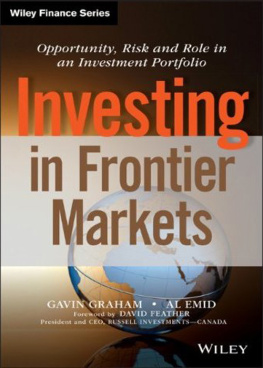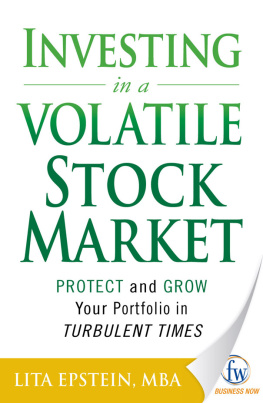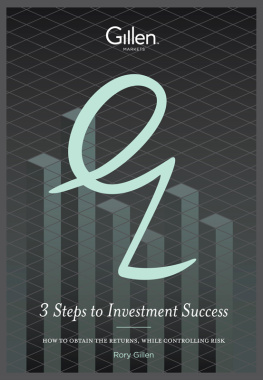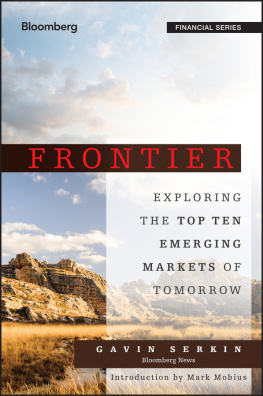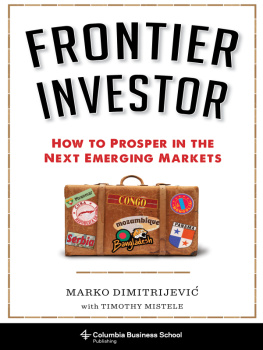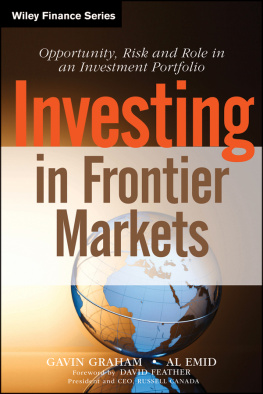
Copyright2013 by Gavin Graham and Al Emid
All rights reserved. No part of this work covered by the copyright herein may be reproduced or used in any form or by any meansgraphic, electronic or mechanicalwithout the prior written permission of the publisher. Any request for photocopying, recording, taping or information storage and retrieval systems of any part of this book shall be directed in writing to the Canadian Copyright Licensing Agency (Access Copyright). For an Access Copyright license, visit www.accesscopyright.ca or call toll free 1-800-893-5777.
Care has been taken to trace ownership of copyright material contained in this book. The publisher will gladly receive any information that will enable them to rectify any reference or credit line in subsequent editions.
Wiley publishes in a variety of print and electronic formats and by print-on-demand. Some material included with standard print versions of this book may not be included in e-books or in print-on-demand. If this book refers to media such as a CD or DVD that is not included in the version you purchased, you may download this material at http://booksupport.wiley.com. For more information about Wiley products, visit www.wiley.com.
National Library of Canada Cataloguing in Publication Data
Graham, Gavin, author Investing in frontier markets : opportunity, risk and role in an investment portfolio / Gavin Graham, Al Emid.
Includes index. Issued in print and electronic formats. ISBN 978-1-118-55632-0 (bound);
ISBN 978-1-118-55634-4 (ebk); ISBN 978-1-118-55633-7 (ebk)
1. Investments, ForeignDeveloping countries. I. Emid, Al, 1946-, author II. Title.
HG5993.G73 2013 332.67'3091724 C2013-904326-8 C2013-904327-6
Production Credits
Cover design: Wiley
Typesetting: LaserWords
Cover image: iStockphoto
Printer: Friesens
Editorial Credits
Executive editor: Karen Milner
Managing editor: Alison Maclean
Production editors: Pamela Vokey and Melissa Lopez
John Wiley & Sons Canada, Limited.
6045 Freemont Blvd.
Mississauga, Ontario
L5R 4J3
Printed in Canada
1 2 3 4 5 FP 16 15 14 13 12
Contents
Acknowledgments
I would like to thank the editors at John Wiley & Sons for their unstinting support of this book and their understanding of how authors go about their tasks. Notwithstanding the obvious fact that authors work in words, defining the relationship between publishers, editors and authors reminds one of trying to answer questions such as How high is up? and What is the meaning of life?but in the right set of circumstances, the relationship works well. Fortunately we had those circumstances in crafting this book.
I would also like to thank all of the individuals in the United States, Canada and in emerging and frontier markets for freely giving their time and expert knowledgeand for their patience with what might have seemed like endless back checking.
I would also like to thank those sources who for different reasons I have not specifically named here but whose counsel I valued while shaping the text.
Finally, I would certainly like to extend special thanks to Steve Spector, JD, MLS, for his comprehensive research and appreciation of the intricacies of emerging and frontier markets investing.
Al Emid
September 2013
I would like to thank first of all my wonderful wife, Perianne, without whose help and support my portion of this book would not have been written.
I would also like to thank Don Loney, our original editor at John Wiley, who had the belief that the market was ready for a book on frontier markets, and David Feather, President and Chief Executive Officer at Russell Investments Canada, who had the vision to support the idea. I would also like to thank Xavier Rolet, Chief Executive Officer of the London Stock Exchange Plc, who kindly spent some time to discuss its role in acting as a gateway for frontier markets companies.
Lastly, I would like to thank the various fund managers and experts who provided insight into the frontier markets and their approach to investing in them.
Gavin Graham
September 2013
Foreword
T hroughout history, frontiers have represented unexplored opportunities, untapped potential, the promise of riches and the lure of discovery.
For today's investors, frontier markets can offer all that and more. They can offer the chance to invest in some of the fastest-growing economies in the world, most with young, vibrant populations and substantial natural resources. They can open a window to new cultures and new industries. And they can help diversify a portfolio and offer the opportunity for enhanced returns.
In this book, authors Gavin Graham and Al Emid outline the potential that investing in frontier markets can hold for investors. Graham, a noted expert on emerging markets, and Emid, one of Canada's foremost writers on investing, have created a comprehensive study on how investors can benefit from gaining exposure to this new market segment.
They conclude, and Russell Investments agrees, that frontier markets are a logical next step for investors who have already discovered how investments in emerging markets can enhance returns and potentially lower a portfolio's overall risk. They believe that since globalization has had numerous economic benefits for emerging markets, it will likely have the same impact on frontier markets over time.
True, investing in frontier markets also holds risksmany of the countries considered frontier markets are politically unstable, can be influenced by strong governmental control over natural resources and industries, and have economies that are vulnerable to sudden shifts in global trends. Moreover, these markets are often less transparent, less liquid and more volatile even than emerging markets.
But many of the more established emerging marketsBrazil, Russia, India and Chinawere considered frontier markets not so long ago. They now contain some of the largest companies in the world, have been integrated into the world economy andimportantlyhave provided investors with returns that have frequently outpaced those from the developed market economies. Indeed, these countries, known collectively as the BRIC nations, have generally better fiscal accounts, balances of trade and growth prospects than their developed market counterparts.
As Graham and Emid show in this book, the MSCI Emerging Markets (Free) Index delivered a return of 13.4 percent p.a. in the decade ending October 2012, compared with the MSCI World Index of developed markets, which gained 5.61 percent p.a. in the same period. Russell research found similar results over the longer term: despite greater volatility, since the late 1980s emerging markets produced the best returns among the asset classes analyzed, and since 1988, emerging markets have outperformed Canadian and U.S. equities by a wide margin. Given demographic trends, growing urbanization, rapid industrialization, increased trade flows and other factors, there is potential for continued outperformance from emerging markets.
Russell Investments believes that frontier markets are now essentially where emerging markets were back in the 1980srelatively unexplored opportunities with great potential. The success that emerging markets have had over the past 30 years is the promise that today's frontier markets now hold.
Moreover, frontier markets show a similarly low correlation with Canadian and U.S. equities as emerging markets did in their infancy. According to Russell research, prior to the global financial crisis in 2008, the rolling correlation was generally below 0.30, and similar to emerging markets, even negative at times. While the crisis caused correlation to briefly spike to over 0.60, it has since trended toward its historical range of 0.20 and lower. However, it would not be surprising for correlations to have episodic spikes due to ongoing macroeconomic uncertainty.

